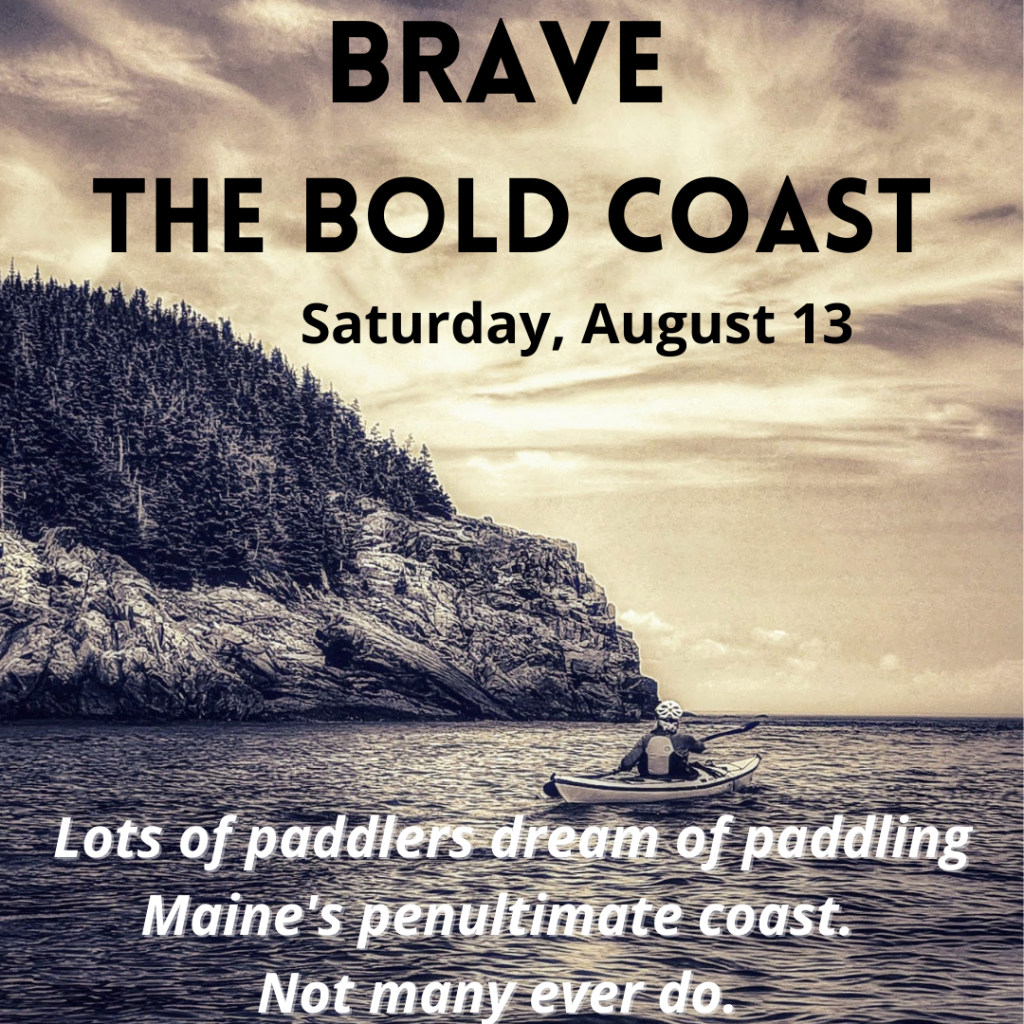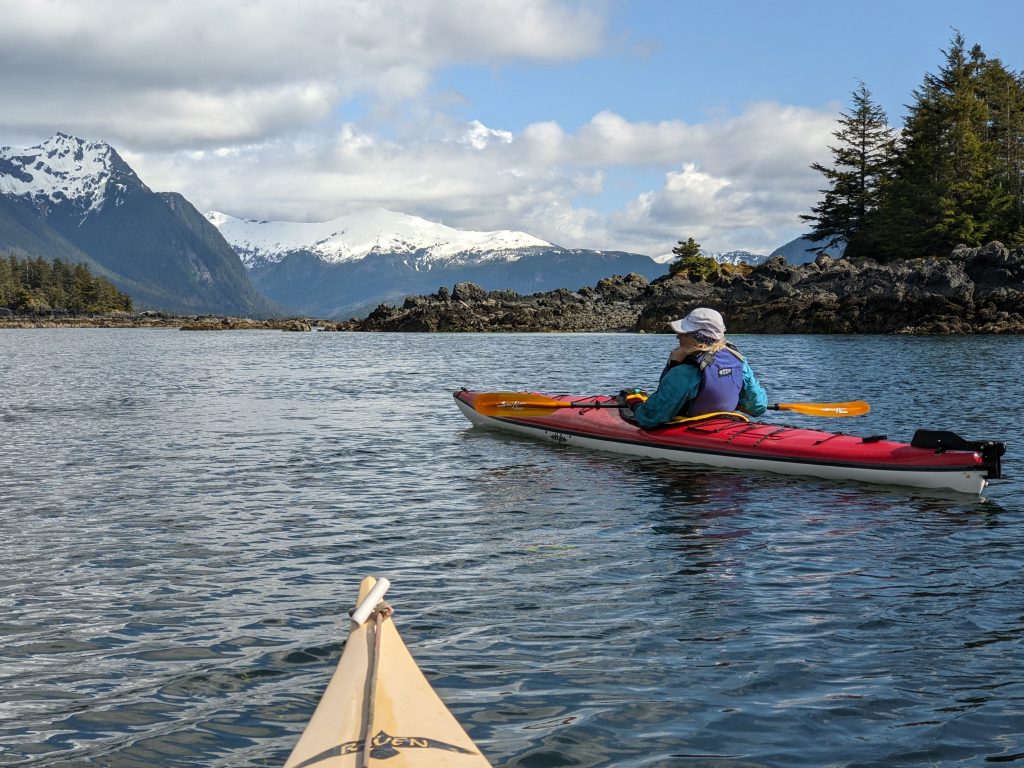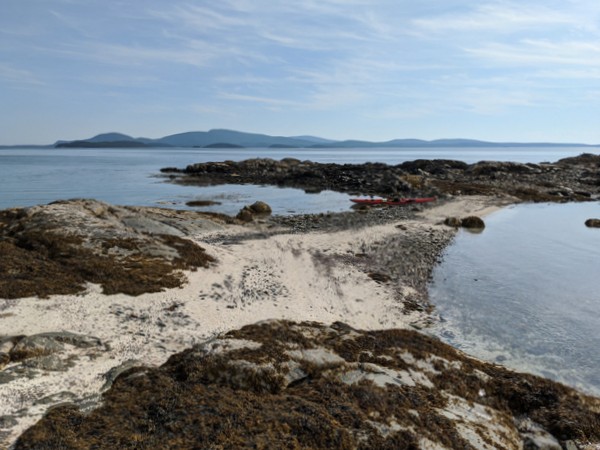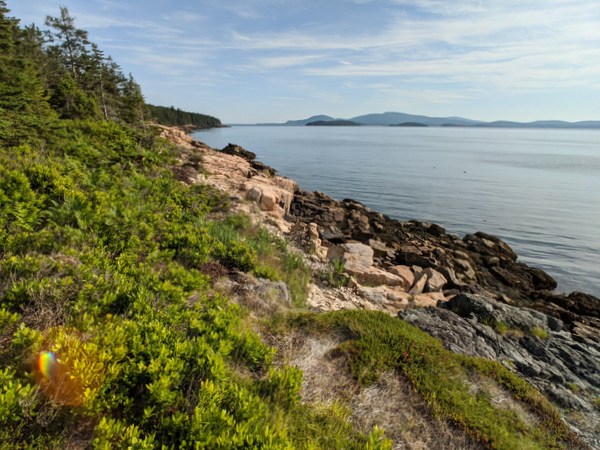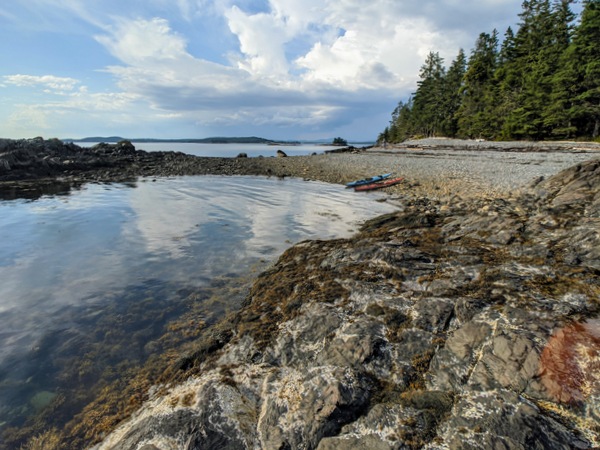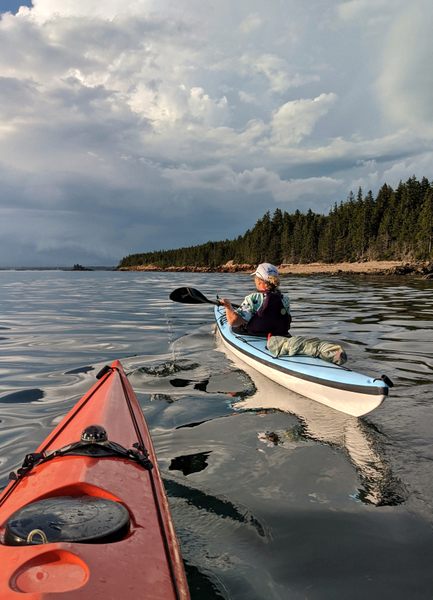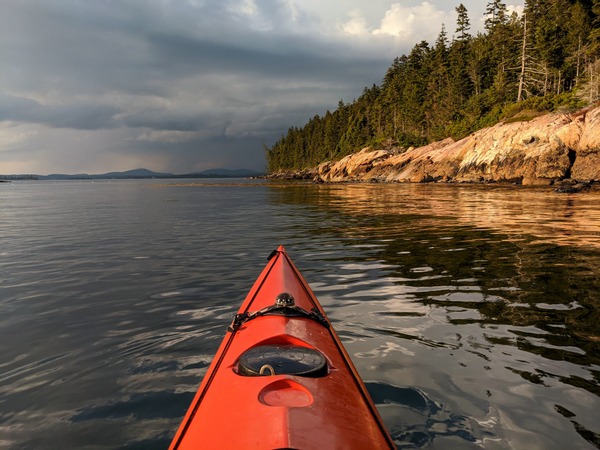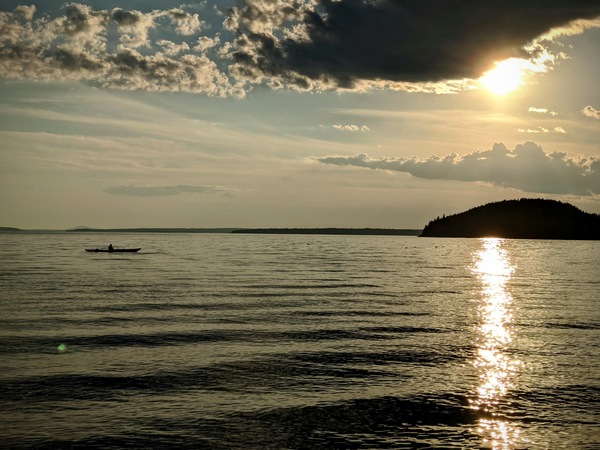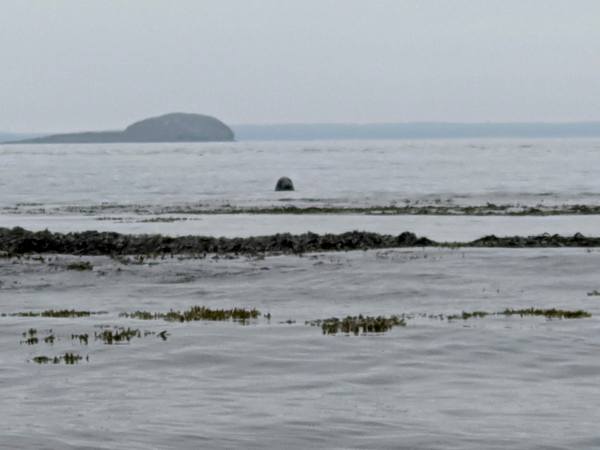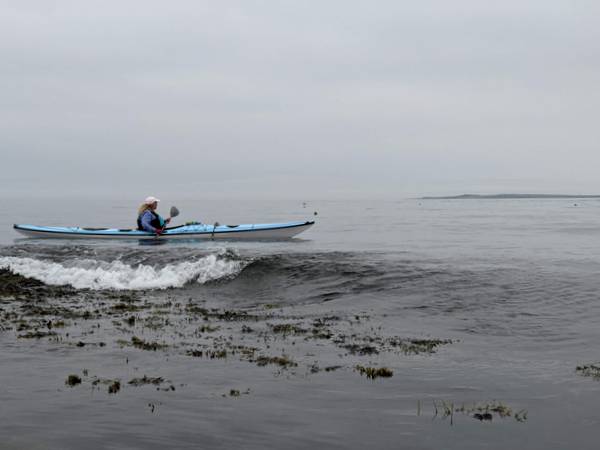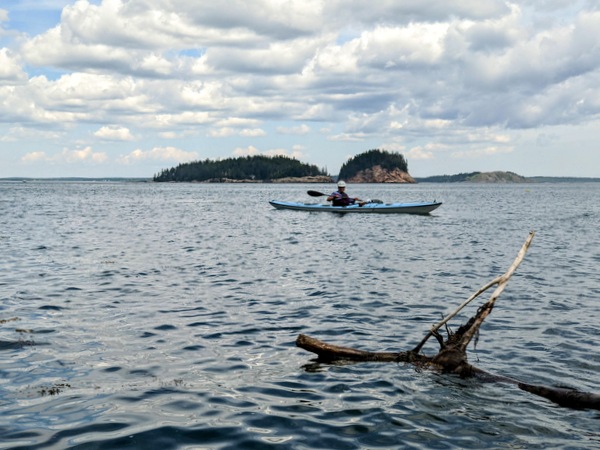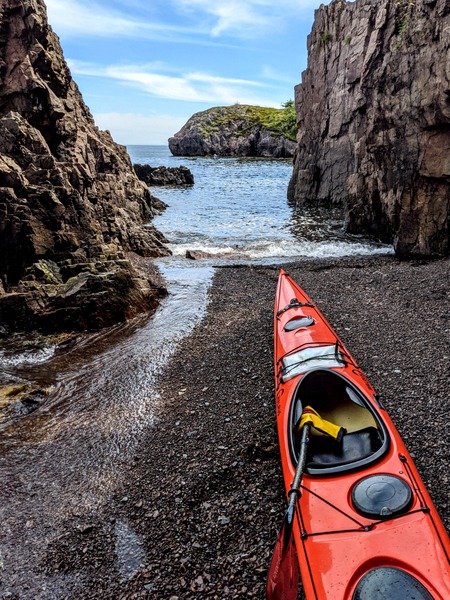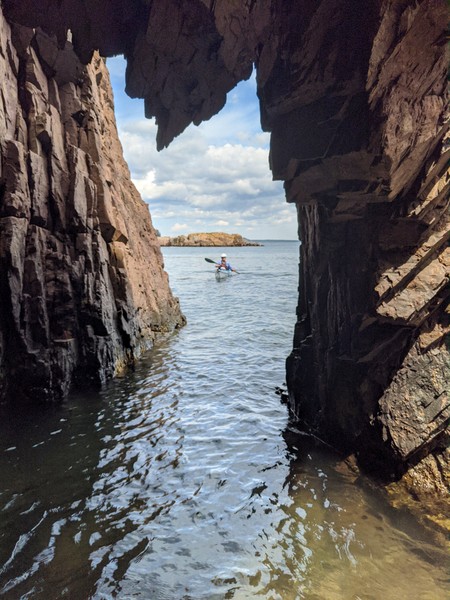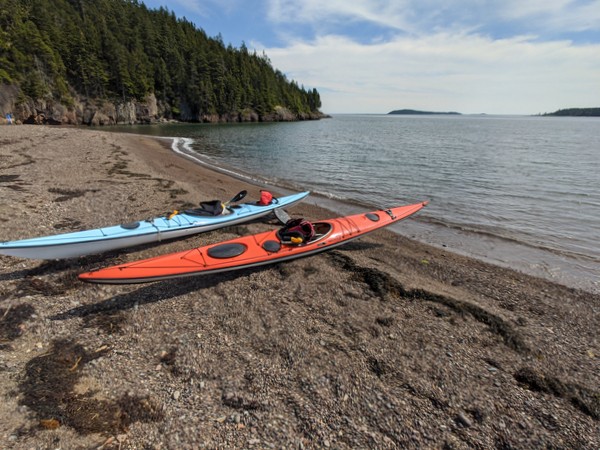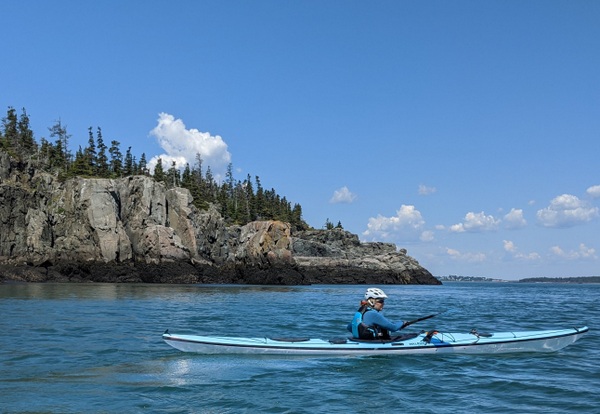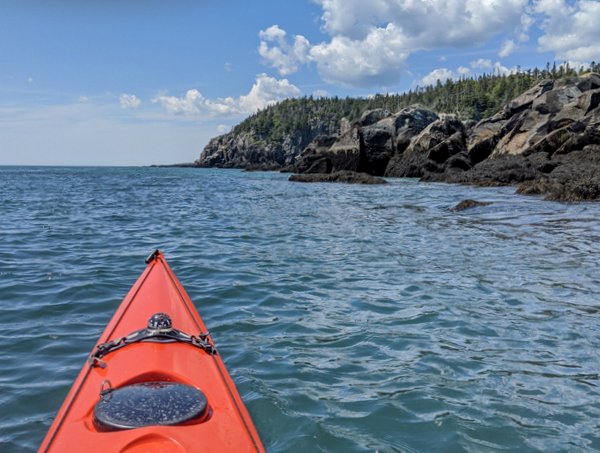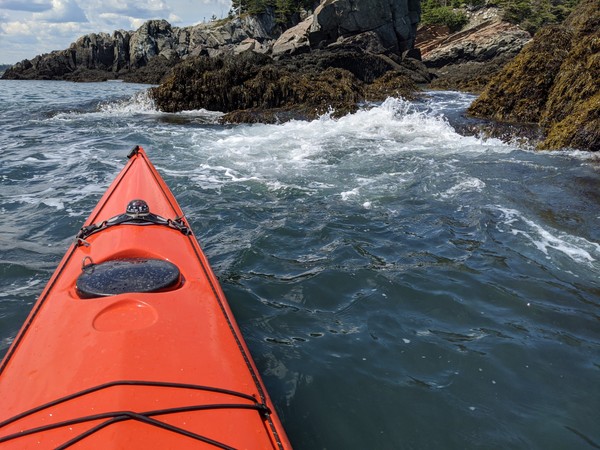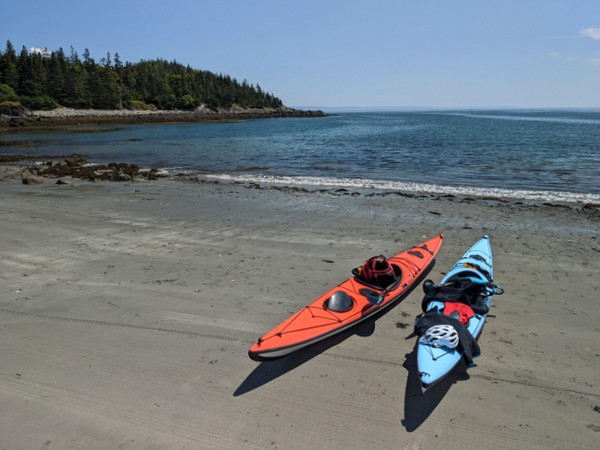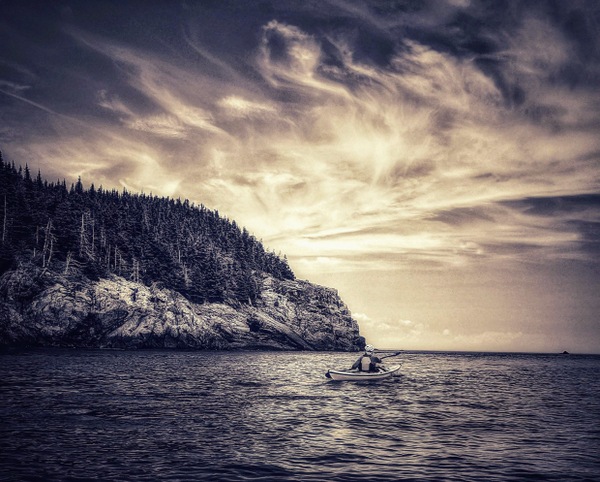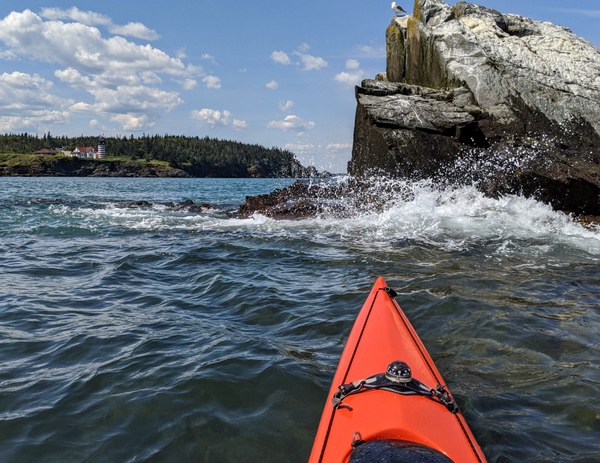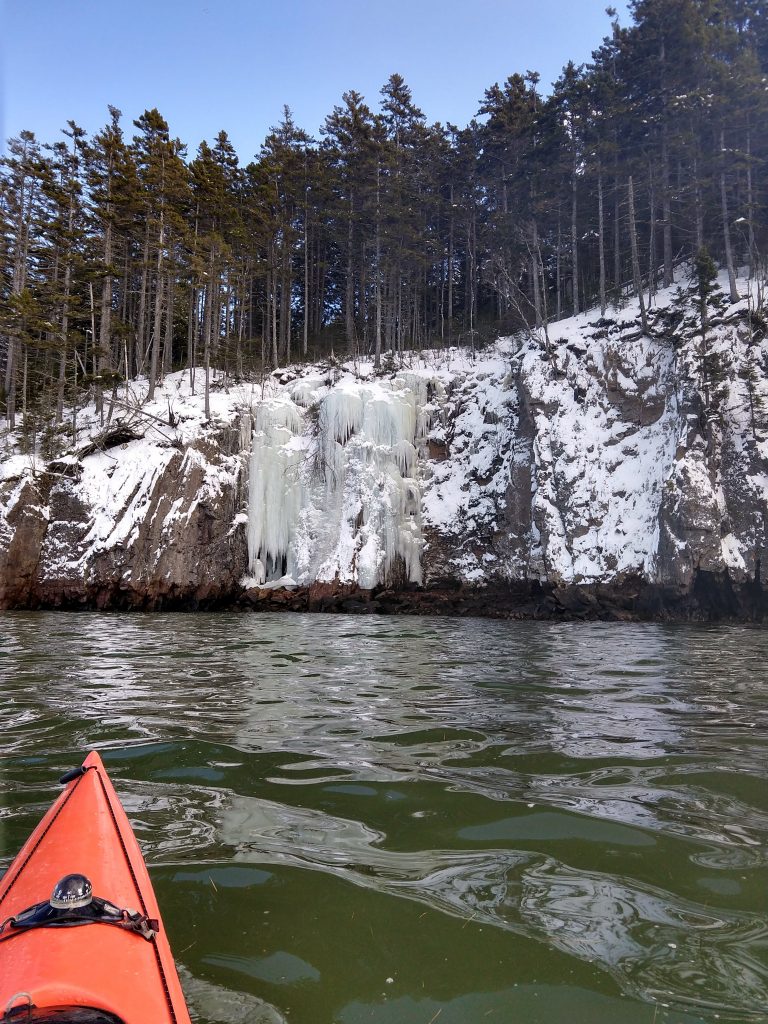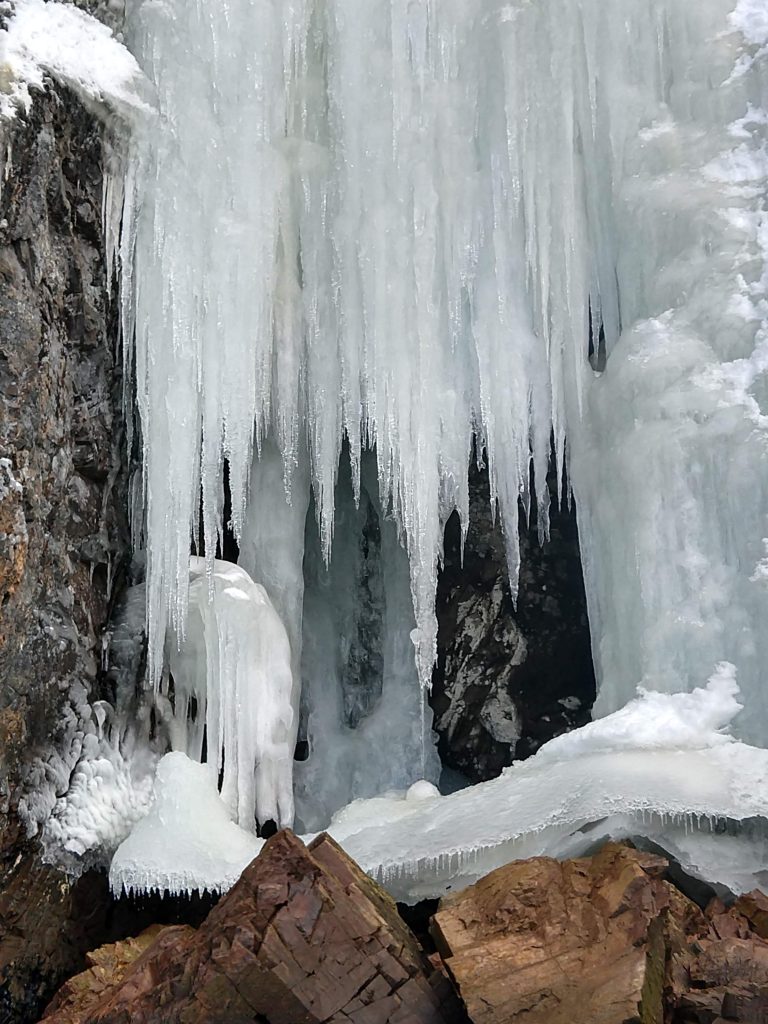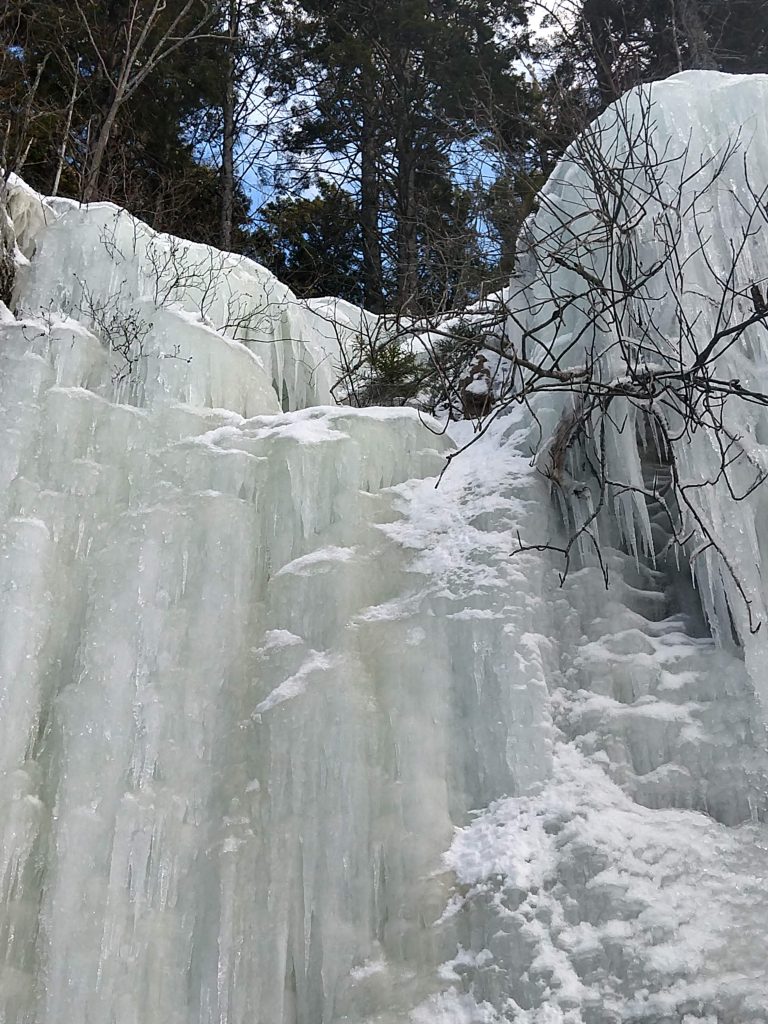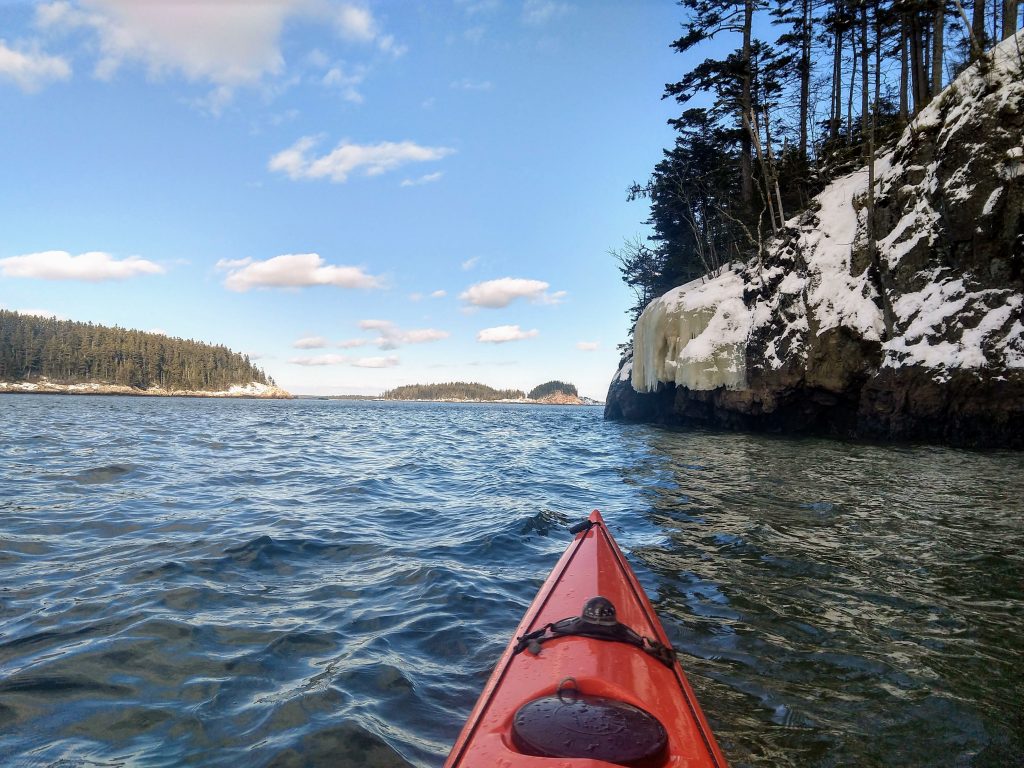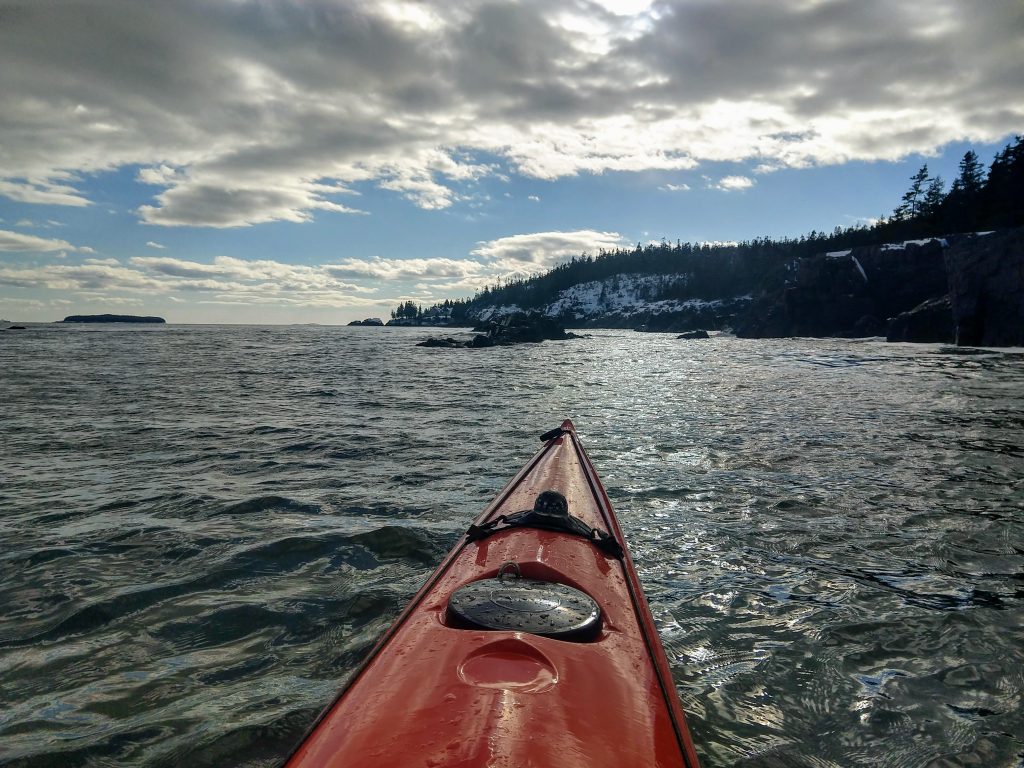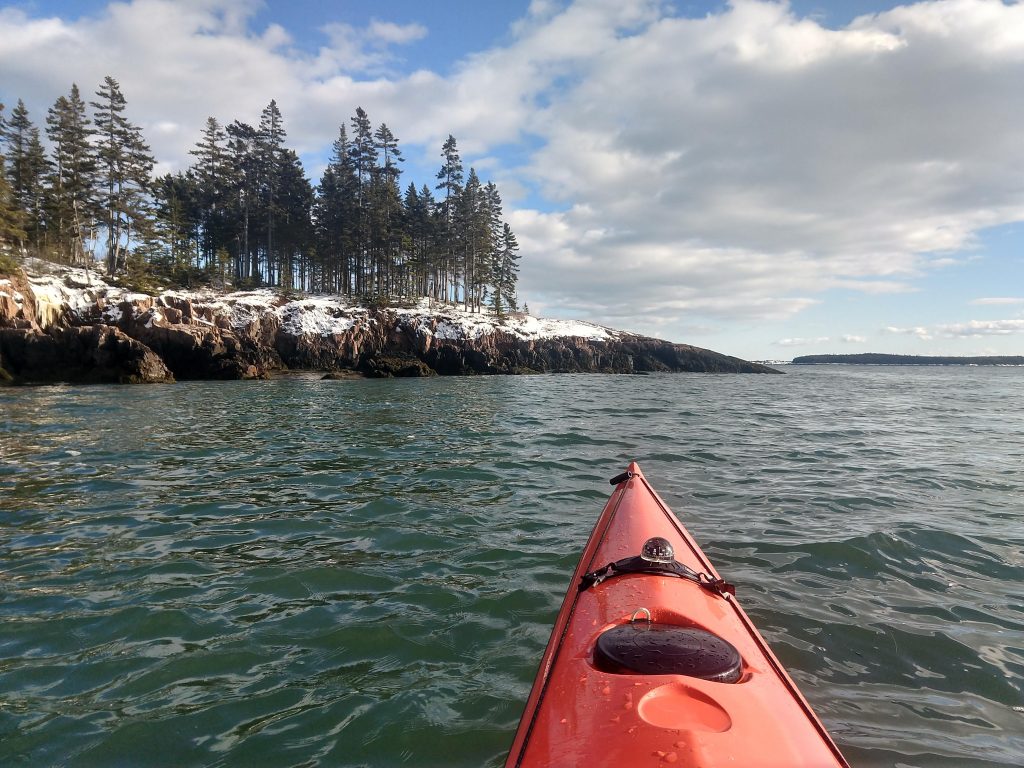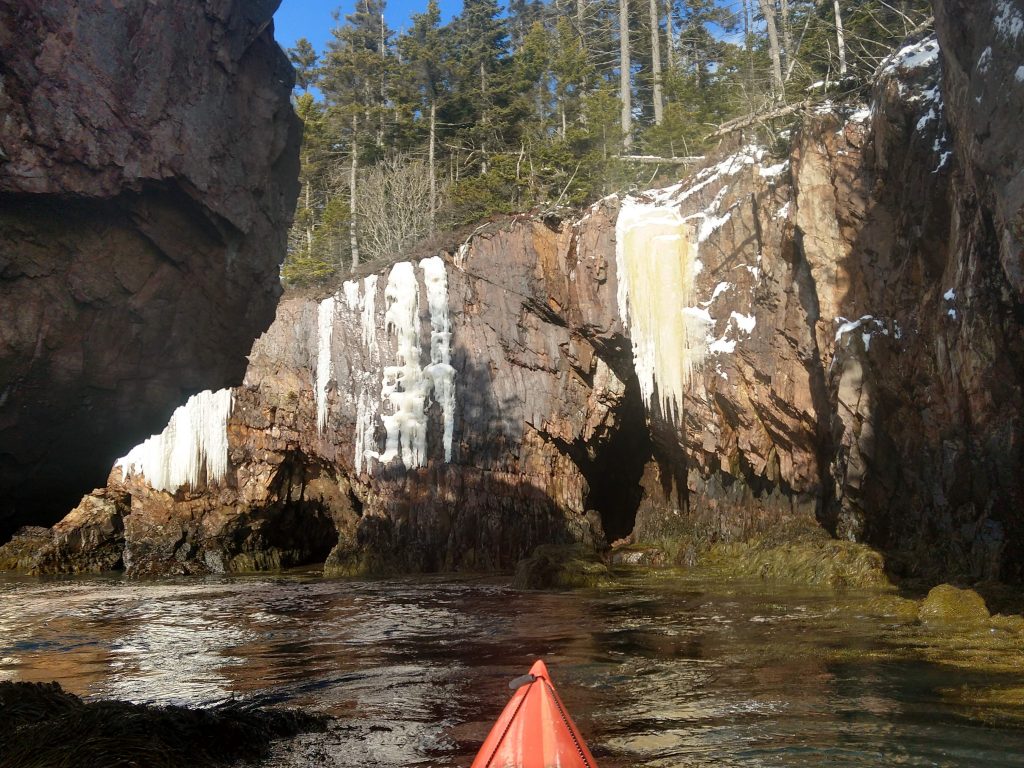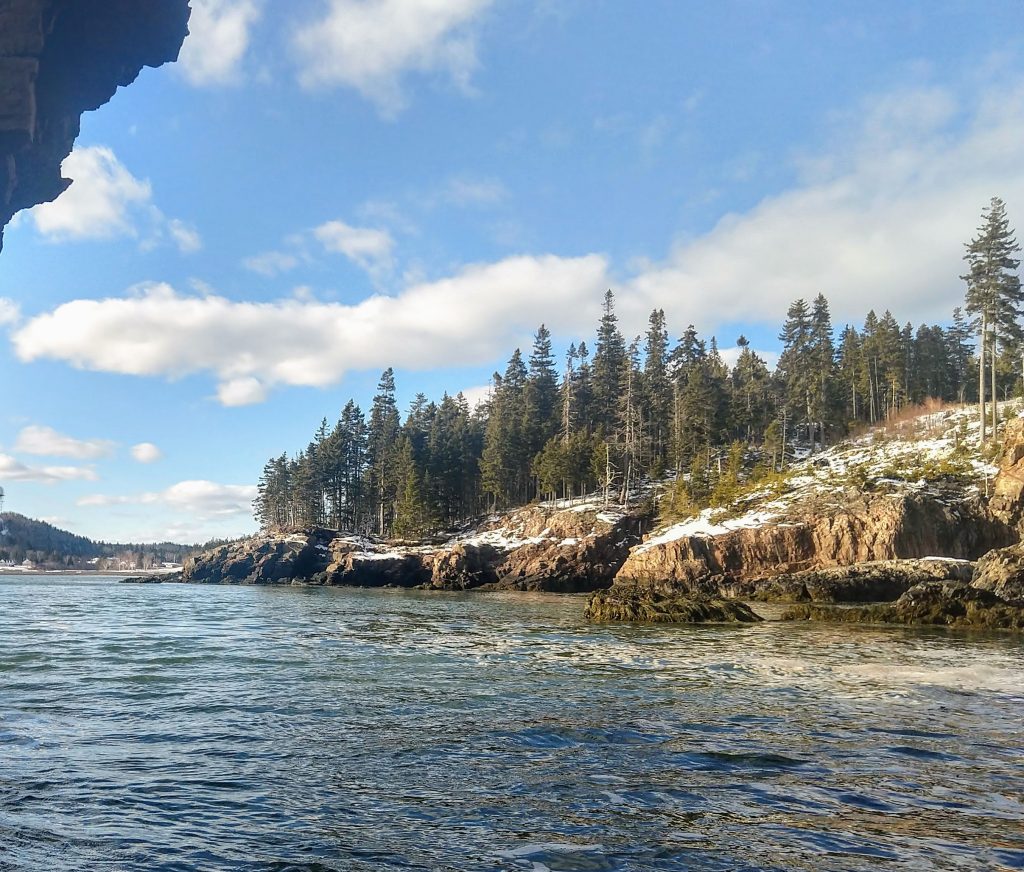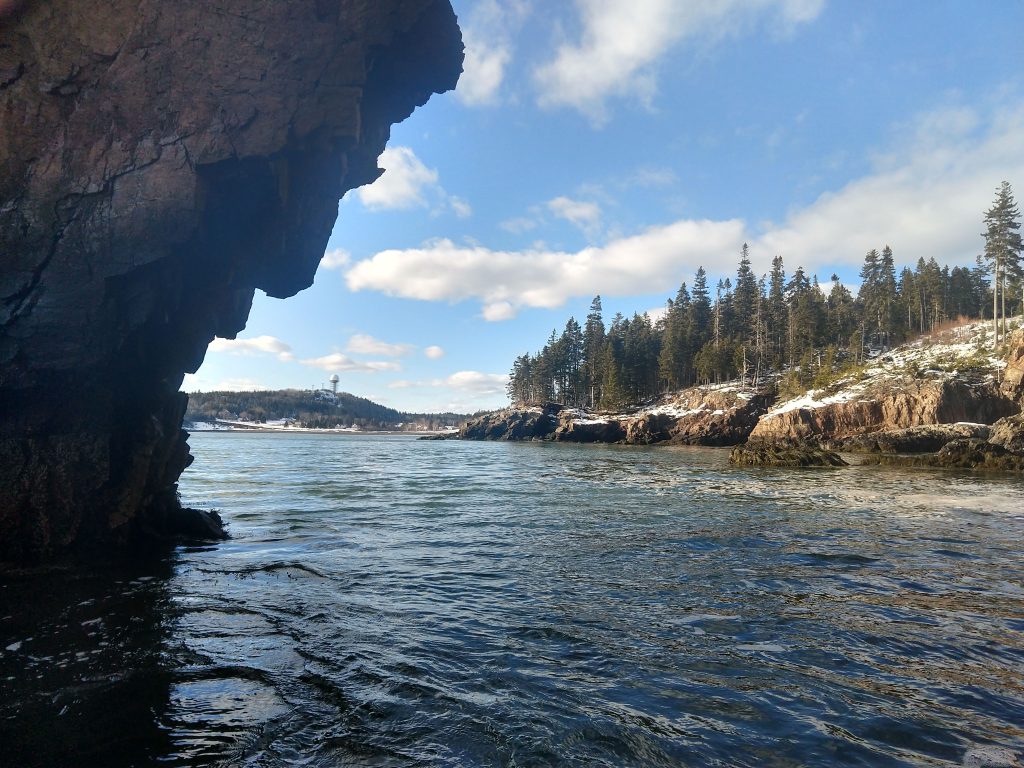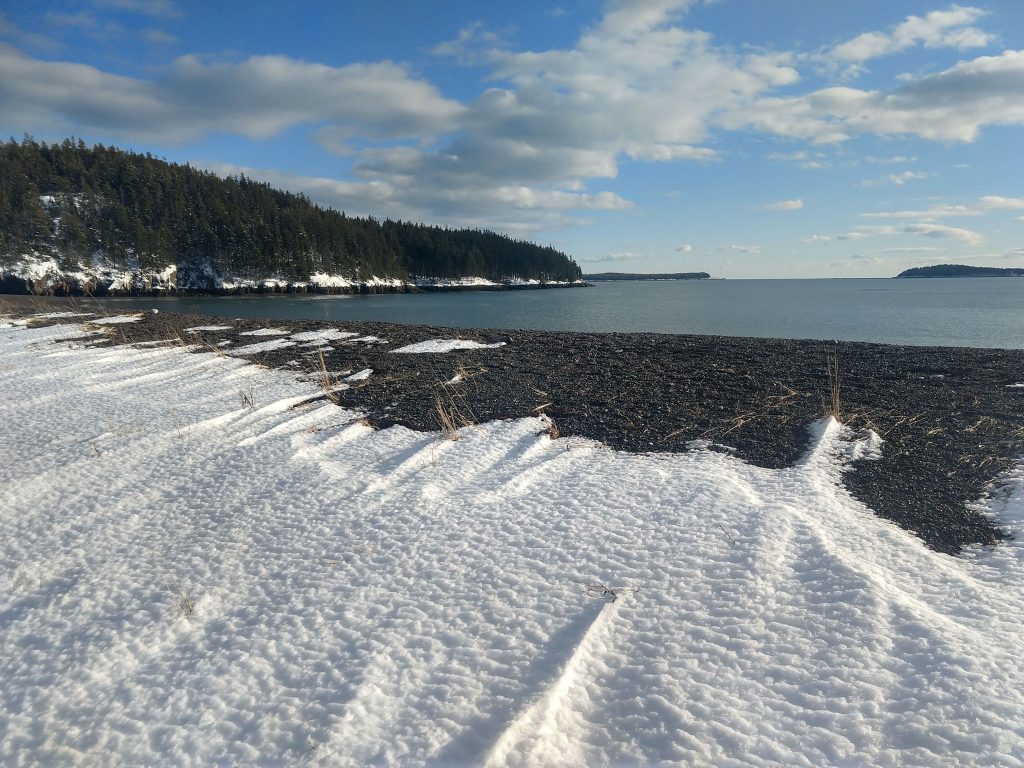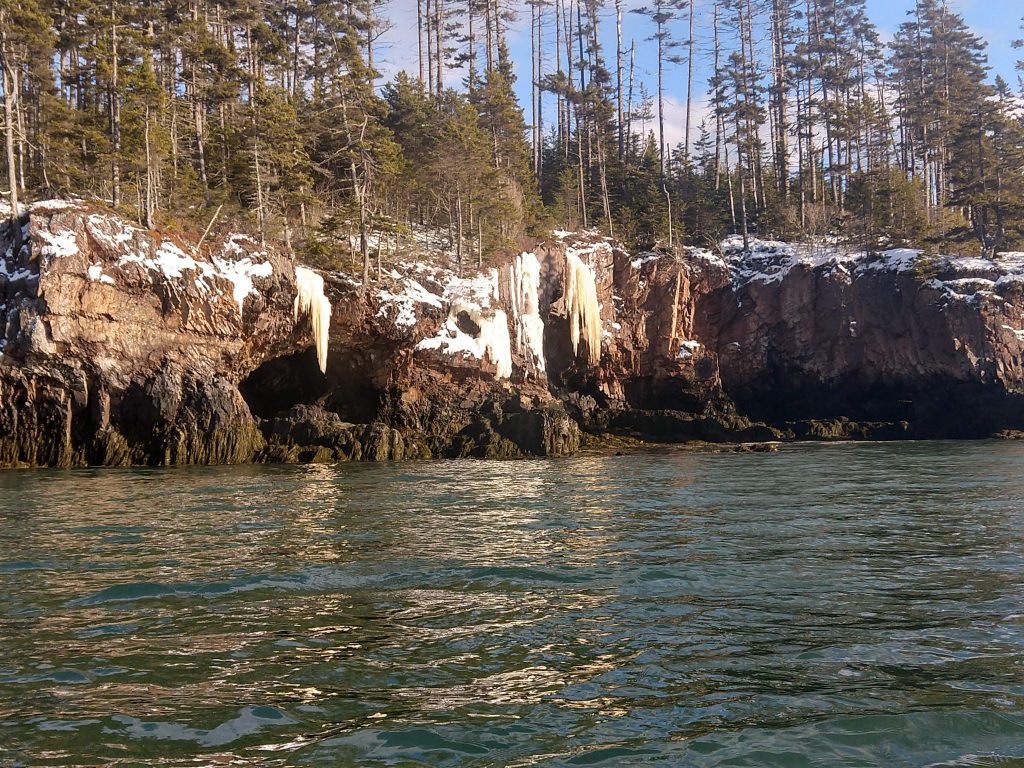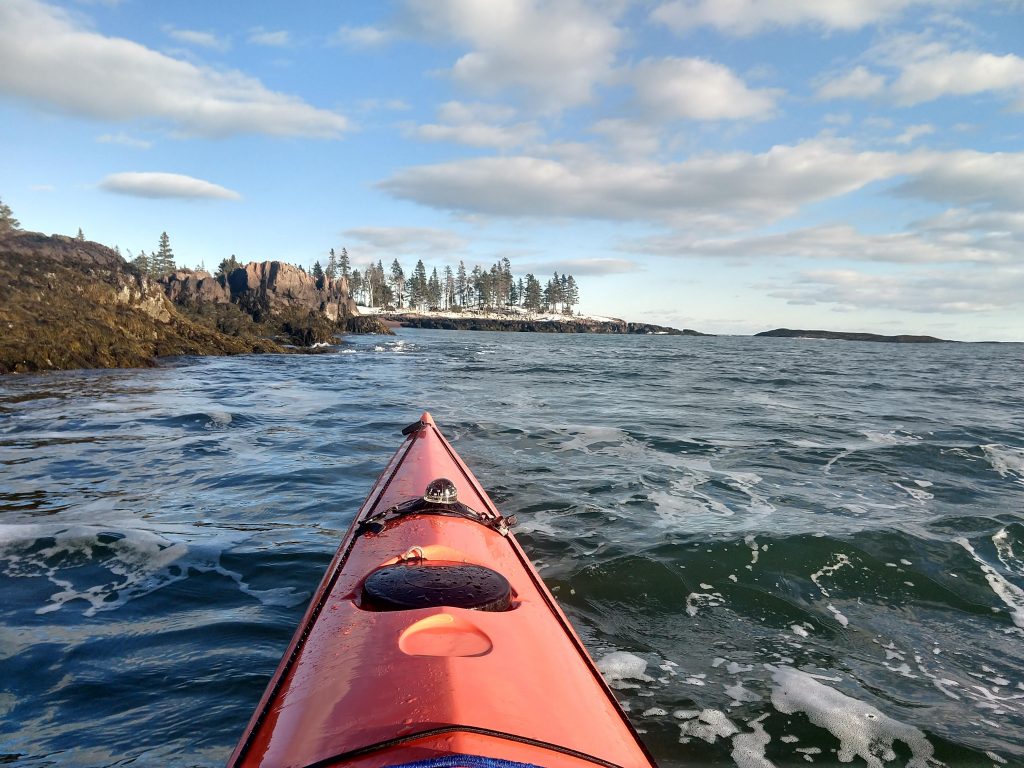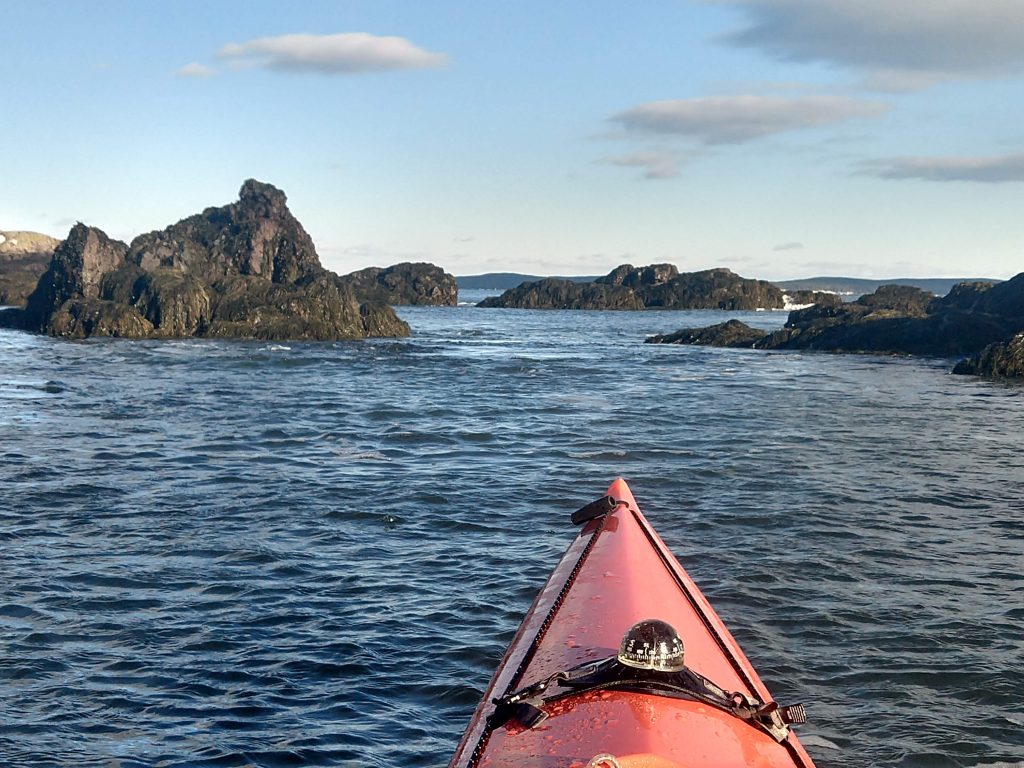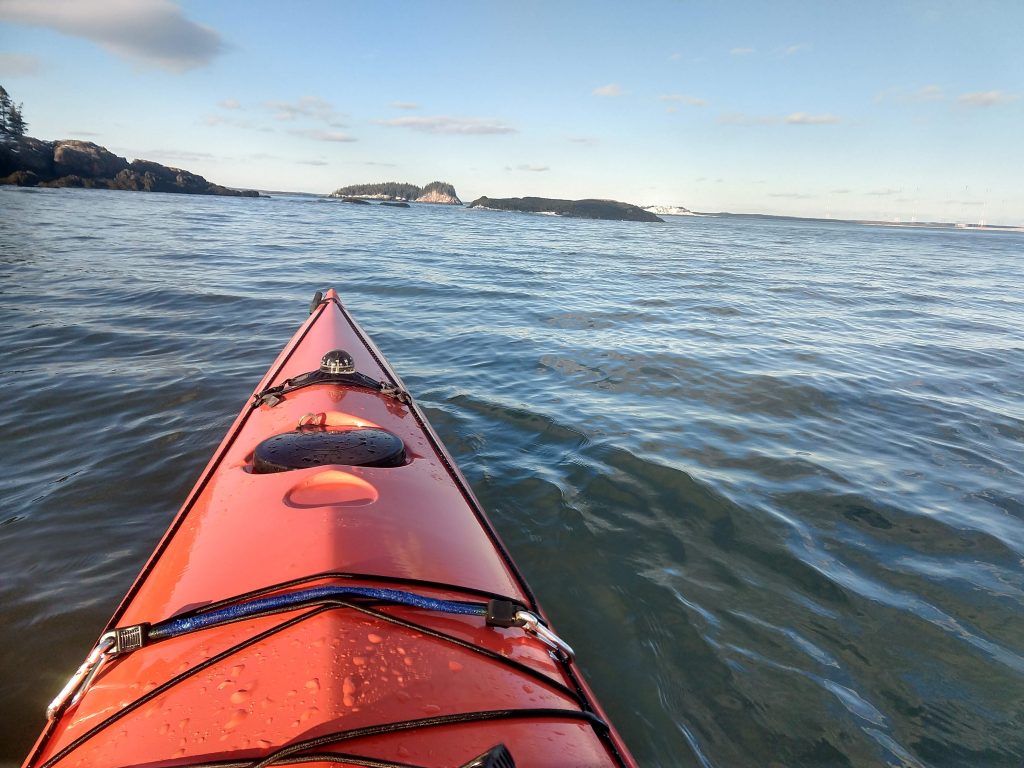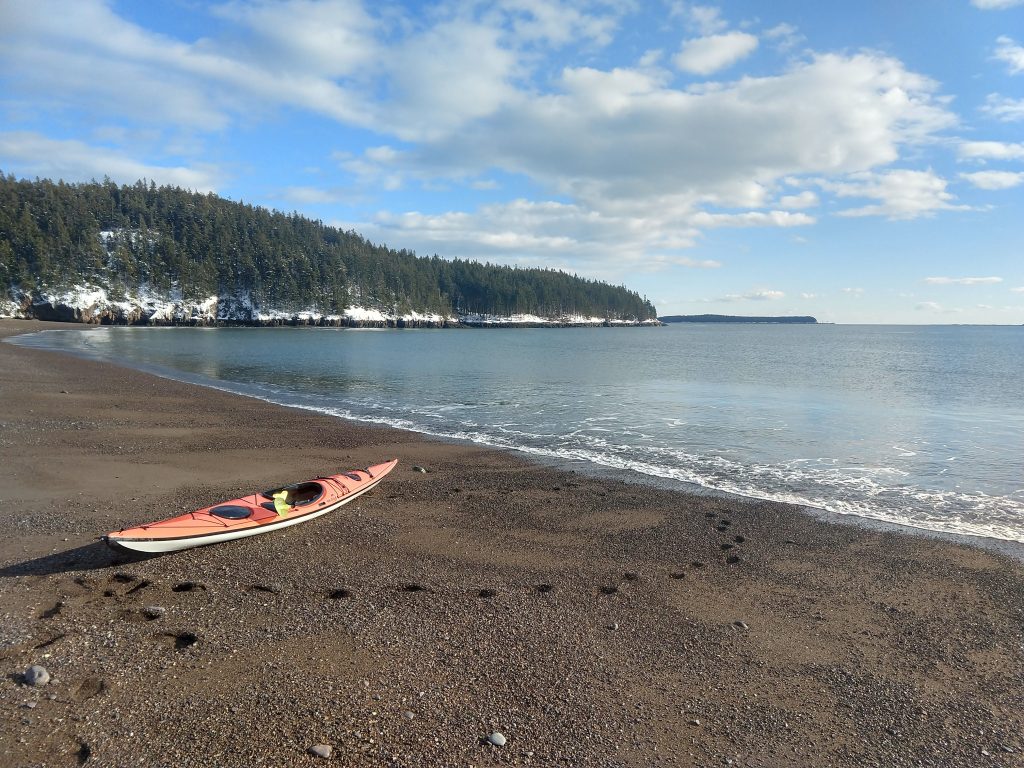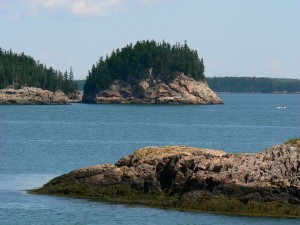There we were, on a wild lake shore, 8 water miles from the put in and roughly 3 miles (as the crow flies) from our vehicle. We stood on a sawdust beach on the southern end of Second Lake in Downeast Maine. We were essentially right smack in the middle of the 11,000 acre Rocky Lake Public Reserve Lands. The sunset, less than an hour away, would be remarkable. It was 7:15 pm and we were hoping finally (that’s another story) to each lunch. Our plan was to walk or catch a ride to our vehicle and then drive back and pick up the kayaks. Trouble is, the boat landing and vehicle access road promised on the Delorme Atlas map as being adjacent to the lake, simply were not there. “Double-take” is probably an understatement in this case.
We could walk out the narrow, mossy mosquito-infested trail that led away from the beach, sure. But how to get the kayaks and gear (combined weight of more than 150 pounds) out to the road? And just how far was it to the drive-able road, anyway?
As a trip leader, I spend a lot of time re-tracing familiar routes. It’s a treat, then, to explore new territory, with only a map as a guide. However, that old Alfred Korzybski adage, “The map is not the territory,” is often quick to manifest itself on such trips, just as it had on this one.
Later, looking closely at the updated Delorme atlas (the one we were using was maybe 5 years old), I could see that the double-dashed unimproved road between Rocky Lake and Second Lake becomes a smaller double-dashed trail as it approaches Second Lake. The distinction was a lot more significant to us than to the map-maker. Let’s just leave it at that.
We had put in on the southern shore of Rocky Lake about four hours before. We paddled north, upwind along the western shore of Rocky Lake. True to its name, this pristine wilderness lake is rocky, shallow, and features a number of islands. We sighted only a handful of camps on our 3-mile trip up the lake shore. Near the northern end, we turned up Rocky Lake stream, a wide green river that meanders northwest through marshlands and is joined by the equally wide and placid Northern Stream before meandering southwest to join the East Machias River below Round Lake.
We then followed the East Machias south through more marshlands, past Oak Point Meadow, to the bridge above Munson Rips. At the bridge, the river narrows and quickens for a quarter mile of Class I whitewater. Then it reverts to its previous character — slow unrelenting flatness — to Second Lake.
While Leslie fixed lunch, I dragged the first kayak down the overgrown trail, fending off mosquitoes with my free hand, and hoping the trail would take me out to a driveable road sooner rather than later. Fortunately, it was no more than a hard 5 minute drag that included a mud-hole, several downed trees, and a steep bank that required clambering. (Adventure races, in which people pay to carry heavy objects through the mud, are becoming all the rage, I reminded myself. This experience was entirely free.) Then it was back to fetch the second kayak and then back again to the lake shore for sunset and “lunch.”
We walked together up the trail, past the kayaks, and onto the graded dirt of the Diamond Match Road. The mosquitoes were bad enough to make us think wistfully of the headwinds we had faced all the way up the lake. But the footing was decent. There were no vehicles to dust up the road, and we made good time in the diminishing light. We reached the Rocky Lake camping area before dark and then drove the 2.5 miles back toward Second Lake to pick up our kayaks.
Our time in the Rocky Lake Public Reserve Lands was all too short. This is a pristine and relatively unheralded wilderness of interest to paddlers, mountain bikers, birdwatchers, and fishermen. Wildlife sightings are said to be common. During our brief stay, we saw eagles, osprey, ducks, loons, beaver, and turtles. According the the BPL website, fish found in reserve waters include small mouth bass, white perch, yellow perch, chain pickerel, alewife, American eel, white sucker, fallfish, and pumpkinseed sunfish. Camping is available at a number of primitive lake shore tent sites and also at a shelter on Rocky Lake.
Read more about this wilderness area at Bureau of Public Lands and Wildernet.com
